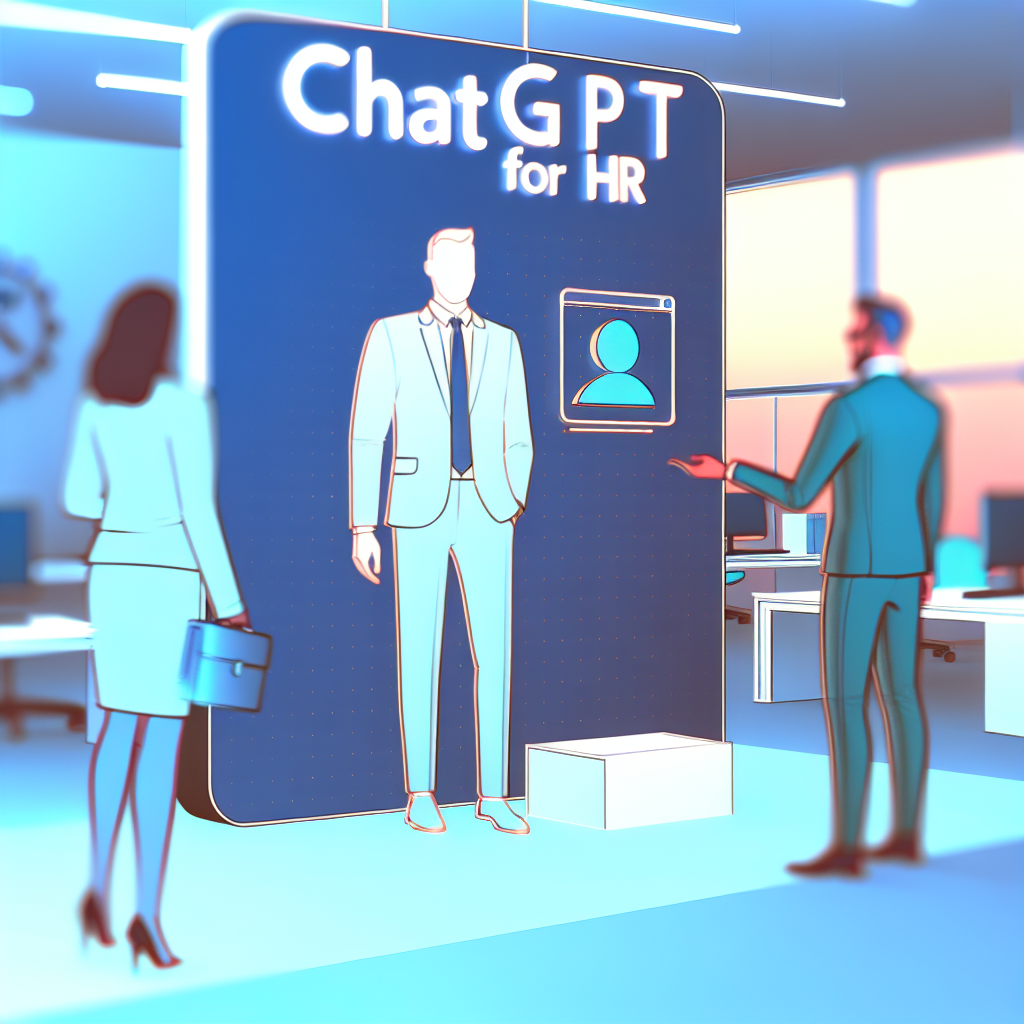
In today’s fast-paced business landscape, Human Resource (HR) professionals are continuously searching for methodologies that can revolutionise their operations. The ever-growing integration of artificial intelligence (AI), particularly with tools like ChatGPT, is reshaping how HR teams interact with employees, handle recruitment, and manage overall workplace dynamics. This article delves into the various dimensions of ChatGPT for HR, its benefits, current trends, and why embracing this technology is critical for HR professionals seeking to excel in their roles.
What is ChatGPT for HR?
ChatGPT for HR refers to the incorporation of OpenAI’s advanced language model into various HR functions. This technology is designed to enhance efficiency, automate repetitive tasks, and facilitate personalised communication. Let’s explore its significance in more detail.
Significance of ChatGPT in HR
- Automated Screening and Recruitment Processes: With its ability to analyse resumes and evaluate candidates on a data-driven basis, ChatGPT can significantly streamline recruitment. This automation not only saves time for HR professionals but also mitigates potential biases often present in manual evaluations.
- Policy Development and Dissemination: ChatGPT can assist in drafting and distributing company policies, ensuring that employees are always informed about the latest guidelines and procedures. This improves organisational transparency and consistency.
- Employee Engagement: By generating human-like text, ChatGPT aids in creating engaging content for employees, such as social media posts, newsletters, or internal announcements. Enhanced communication fosters a more connected workforce.
Current Trends in AI and HR
The rise of AI technologies like ChatGPT is becoming a hallmark in HR operations. Below are key trends that emphasise the shift towards integrating AI in human resources:
- AI Integration in HR Operations: Firms are recognising the need for AI tools to increase efficiency, lower costs, and enhance revenue generation. The use of AI chatbots in everyday HR operations is gaining momentum.
- Round-the-Clock Interaction: AI chatbots, including those driven by ChatGPT, offer continuous availability, allowing employees to receive information promptly without waiting for a human response. This immediate access to details about company policies and benefits is invaluable.
Key Benefits of ChatGPT for HR
Integrating ChatGPT into HR operations presents numerous benefits. Let’s consider some of the most notable advantages:
- Efficiency and Personalisation: By automating functions like policy dissemination and benefits management, ChatGPT allows HR professionals to focus more on strategic initiatives rather than administrative tasks.
- Unbiased Talent Acquisition: AI integration facilitates objective assessments during the recruitment process. This not only optimises talent acquisition but also minimises the presence of unconscious bias, leading to a more diverse workplace.
- Employee Self-Service: ChatGPT empowers employees through self-service features, enabling them to access information about company policies and procedures conveniently. This creates a more responsive HR function.
- Strategic Planning: AI models, including ChatGPT, provide HR teams with robust analytics capabilities, aiding in data-driven decision-making and future workforce planning.
The Transformative Potential of ChatGPT in HR
There is a substantial transformative potential associated with deploying ChatGPT within HR functions. This technology does not simply enhance operational efficiencies; it fosters a more dynamic and inclusive workplace. However, it is vital to approach this integration mindfully to mitigate risks associated with AI deployment.
Implementing ChatGPT in HR: Steps to Consider
For HR professionals looking to leverage the benefits of ChatGPT, a systematic approach to implementation is essential. Here are some steps to consider:
- Assessment of Needs: Evaluate existing HR processes to identify areas that would benefit most from automation and improved communication.
- Choosing the Right Tools: Research various AI platforms to select one that aligns well with your HR objectives and organisational culture.
- Training and Onboarding: Ensure HR staff are adequately trained to work alongside AI technologies. This involves understanding how to interact with ChatGPT and optimising its functionalities.
- Managing Change: Address potential employee concerns regarding AI integration through transparent communication. Explain the advantages and offer training sessions to ease the transition.
- Monitoring and Feedback: After implementation, continuously monitor the performance of ChatGPT applications and solicit feedback from employees to make necessary adjustments.
Challenges in Implementing AI in HR
While the integration of ChatGPT into HR operations presents numerous advantages, several challenges may arise, including:
- Data Privacy Concerns: Employees may fear that their personal data could be misused. It is essential to adhere to strict data protection policies and keep open lines of communication regarding data usage.
- Resistance from Staff: Some employees may resist adopting new technologies. Engaging employees in discussions around the benefits of their AI counterparts can alleviate fears and foster a positive culture of innovation.
- Quality Control: Ensuring the information provided by AI is accurate is crucial. Continuous monitoring and regular training of the model are essential to maintain high standards.
The Future of AI in Human Resources
The trajectory of AI in HR, particularly with tools like ChatGPT, indicates an increasing reliance on technology to enhance workplace efficiencies. Future advancements are expected to provide even more sophisticated tools capable of predictive analytics, making HR practices smarter and more proactive.
Conclusion
As the landscape of HR continues to evolve, integrating innovative technologies like ChatGPT becomes imperative for HR professionals committed to excellence. This integration holds the promise of not only streamlining operations but also cultivating an environment conducive to employee engagement and development. By embracing these tools, organisations can enhance their human resources capabilities, leading to a more dynamic and progressive workplace.
For further insights into the potential of AI in HR, consider exploring additional resources such as HR Future: ChatGPT for HR – What Can ChatGPT Do In 2024? and Aisera: What is an HR Chatbot? Use Cases and Benefits.
Vadim Kouznetsov is a distinguished entrepreneur and the visionary founder and CEO of JobXDubai.com, the UAE’s rapidly expanding job board. Renowned for his expertise in bridging the gap between job seekers and employment opportunities, Vadim has become a leading authority in the recruitment and job market of Dubai.
